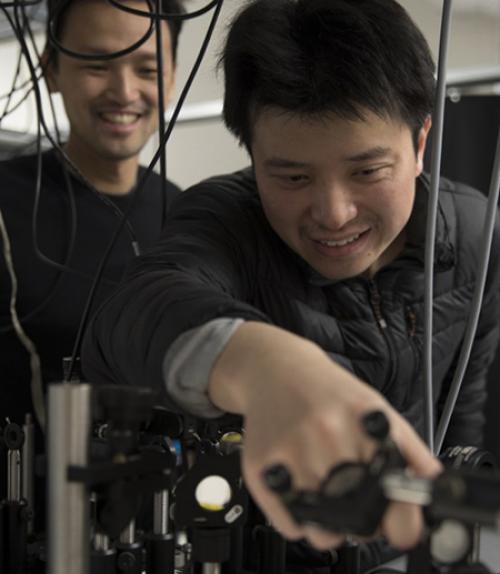
 Department Homepage
The College of Arts & Sciences
Department Homepage
The College of Arts & Sciences
Married physics researchers share lab, students and the joy of discovery
Jie Shan, professor of applied and engineering physics in the College of Engineering, and Kin Fai Mak, assistant professor of physics in the College of Arts and Sciences, are experts on atomically thin materials, particularly their optical and electronic properties.




